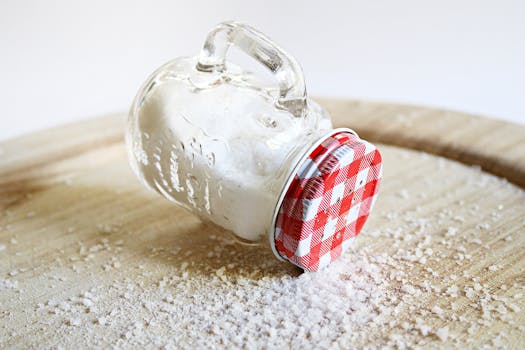Complete Guide to the Types of Salt and How to Choose the Healthiest One
Salt is an essential mineral that plays a crucial role in our diets, influencing everything from flavor to health. With a plethora of salt types available in the market, it can be overwhelming to choose the right one. This guide will explore the various types of salt, their health implications, and how to select the healthiest option for your needs.
Understanding the Different Types of Salt
Salt comes in various forms, each with unique characteristics, flavors, and uses. Here are some of the most common types:
- Table Salt: This is the most common type of salt, often found in households. It is highly refined and usually contains additives like anti-caking agents. Table salt is often iodized, which helps prevent iodine deficiency.
- Sea Salt: Harvested from evaporated seawater, sea salt retains trace minerals that can enhance its flavor. It is less processed than table salt and comes in various grain sizes.
- Himalayan Pink Salt: Mined from ancient sea salt deposits in the Himalayas, this salt is known for its pink hue, which comes from iron oxide. It contains over 80 trace minerals and is often marketed as a healthier alternative.
- Kosher Salt: This salt has larger grains and is often used in the koshering process of meats. It is favored by chefs for its ease of handling and ability to dissolve quickly.
- Fleur de Sel: A premium sea salt harvested from the surface of salt ponds, Fleur de Sel is known for its delicate flavor and flaky texture. It is often used as a finishing salt.
- Black Salt: Also known as Kala Namak, this salt has a distinctive flavor and is often used in South Asian cuisine. It contains minerals that give it a unique taste and color.
Health Implications of Different Salts
While salt is essential for bodily functions, excessive sodium intake can lead to health issues such as hypertension and cardiovascular diseases. Here’s how different salts stack up in terms of health:
- Table Salt: High in sodium, it can contribute to health problems if consumed in excess. However, its iodine content is beneficial for thyroid health.
- Sea Salt: Contains trace minerals, but its sodium content is similar to table salt. Moderation is key.
- Himalayan Pink Salt: Often touted for its mineral content, it still contains a high level of sodium. Its health benefits are often overstated.
- Kosher Salt: While it has a lower sodium density due to its larger grains, it is still high in sodium overall. It is often used in cooking rather than as a table salt.
- Fleur de Sel: This gourmet salt is used sparingly, which can help limit sodium intake. Its unique flavor can enhance dishes without needing large quantities.
- Black Salt: Contains minerals that may offer health benefits, but like other salts, it should be consumed in moderation.
How to Choose the Healthiest Salt
Choosing the healthiest salt involves considering both your dietary needs and culinary preferences. Here are some tips to guide your selection:
- Check Sodium Content: Look for salts with lower sodium content if you are concerned about hypertension.
- Consider Iodine Levels: If you are not getting enough iodine from other sources, opt for iodized salt.
- Look for Trace Minerals: If you want additional minerals, consider sea salt or Himalayan pink salt, but remember that the health benefits are often minimal.
- Use Sparingly: Regardless of the type, use salt in moderation to maintain a balanced diet.
- Flavor Preferences: Choose a salt that complements your cooking style. For example, kosher salt is great for seasoning meats, while Fleur de Sel is perfect for finishing dishes.
Conclusion
Salt is an integral part of our diets, but not all salts are created equal. Understanding the different types of salt and their health implications can help you make informed choices. While table salt remains a staple, exploring options like sea salt, Himalayan pink salt, and kosher salt can add flavor and variety to your meals. Remember to consume salt in moderation and consider your overall dietary needs when making your selection. By doing so, you can enjoy the benefits of salt while minimizing health risks.
